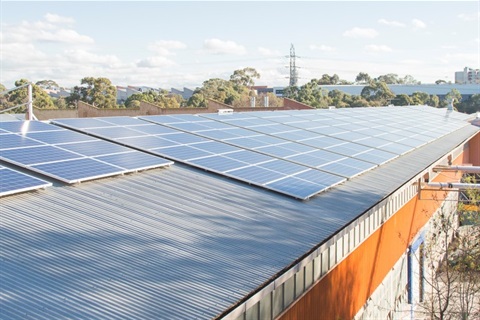Darebin leads towards net zero
Published on 21 July 2022

Darebin joins push from 23 Victorian councils for more sustainable design in planning requirements.
Today we’ve joined 23 Victorian councils to push for more sustainable design within planning requirements by lodging a new planning scheme amendment with the State Government.
The amendment seeks to introduce planning policy that prioritises sustainability requirements for new buildings and encourages a move towards net zero carbon development.
With this amendment, we have written to the new Minister for Planning, the Hon Lizzie Blandthorn MP, asking for their support of the amendment and to acknowledge current planning requirements don’t reflect the urgency needed to tackle the climate emergency.
The amendment seeks to build on current environmentally sustainable development (ESD) requirements for new developments and better protect the natural environment, reduce resource and energy consumption, and support the health and wellbeing of future residents.
Mayor Cr Lina Messina said Darebin was leading the way on tackling the climate emergency with real action.
“We’re thrilled to be joining forces across the state on this incredibly important work. Local governments have long led Victoria’s progress towards net zero carbon in new builds, but we need governments at all levels to work together if we want real change.”
“Darebin calls on the Minister and their State colleagues to make ESD a priority.”
“It’s only with their help we can make net zero carbon in new Victorian builds a reality,” Cr Messina said.
Darebin has collaborated with Ballarat, Banyule, Bayside, Boroondara, Frankston, Glen Eira, Greater Bendigo, Greater Dandenong, Greater Geelong, Hobsons Bay, Knox, Maribyrnong, Mitchell, Moonee Valley, Moreland, Mornington Peninsula, Port Phillip, Stonnington, Strathbogie, Warrnambool, Whitehorse, Whittlesea and Yarra councils. This represents approximately half the Victorian population and planning activity.
After the State Government’s recent implementation of Stage 1 of its ESD Roadmap (by creating new planning policy objectives), we see our amendment as the next step in improving ESD requirements with detailed, measurable targets that will deliver meaningful outcomes.
Under the proposed changes, new developments would:
- produce net zero carbon emissions
- reduce household bills by making buildings more energy efficient
- provide a healthier and more comfortable environment for building occupants
- better manage water quality, use and collection
- protect and enhance greening and biodiversity
- be more resilient to changing climate impacts.
We’re undertaking this work as a member of the Council Alliance for a Sustainable Built Environment (CASBE), supported by the Municipal Association of Victoria (MAV).